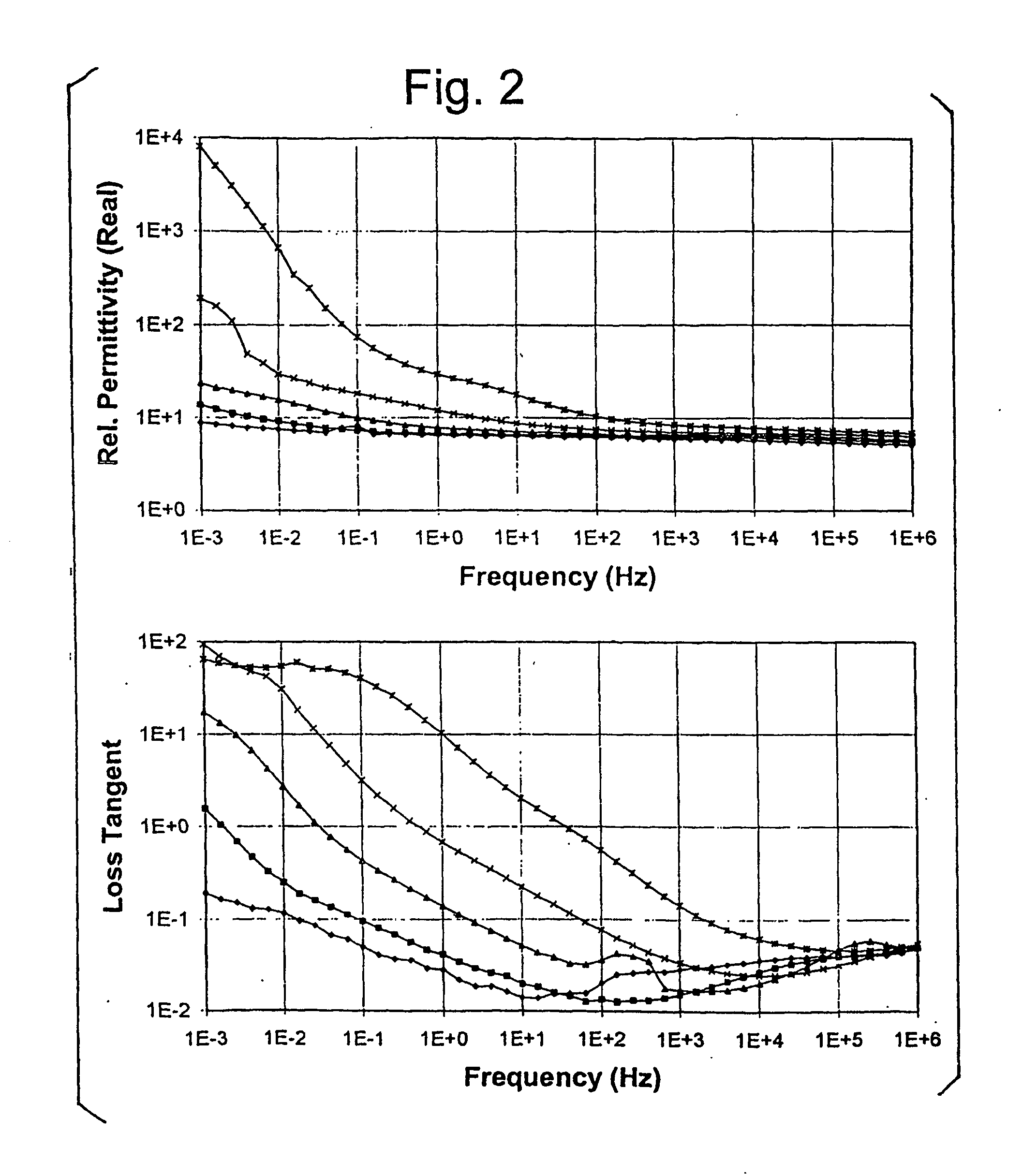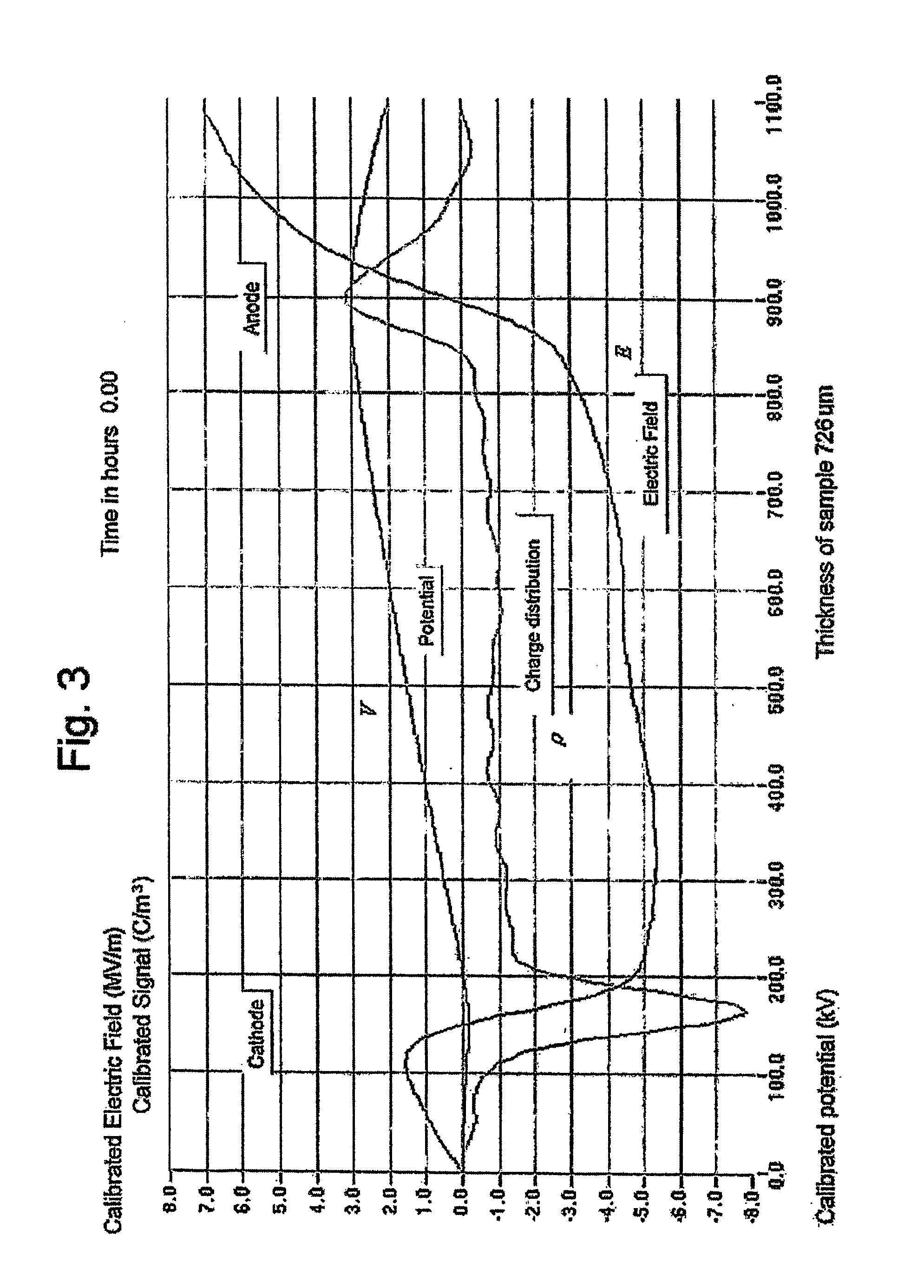Nanometric composites as improved dielectric structures
a dielectric structure and nanometric technology, applied in the field of nanometric composites, can solve the problems of affecting dielectric strength and loss, limiting design, and using fillers such as fillers in a negative way
- Summary
- Abstract
- Description
- Claims
- Application Information
AI Technical Summary
Benefits of technology
Problems solved by technology
Method used
Image
Examples
example 1
[0039] Composites were provided for micro-particulates and nano-particulates of Titanium Dioxide embedded in a resin matrix of Bisphenol-A epoxy. A list of the composites is shown below in Table 1.
[0040] Test samples of the composites were formed by molding between polished surfaces, held apart by spacers, as described in Griseri V., “The effects of high electric fields on an epoxy resin”, Ph.D. Thesis, University of Leicester, 2000. The molded films range in thickness between 500 and 750 μm. The weighed resin and hardener were degassed at 35° C. and the relevant dried particulate fill was incorporated into the resin by mechanical stirring. Due to their small size, surface interactions for nanoparticles, such as hydrogen bonding, become magnified. This means that the particles tend to agglomerate and dispersion in resins is quite difficult, even in polymers that should be relatively compatible. Hence, in the case of nano-particles, large shear forces are needed in the mixing proces...
PUM
| Property | Measurement | Unit |
|---|---|---|
| dielectric constant | aaaaa | aaaaa |
| dielectric constant | aaaaa | aaaaa |
| thickness | aaaaa | aaaaa |
Abstract
Description
Claims
Application Information
 Login to View More
Login to View More - R&D
- Intellectual Property
- Life Sciences
- Materials
- Tech Scout
- Unparalleled Data Quality
- Higher Quality Content
- 60% Fewer Hallucinations
Browse by: Latest US Patents, China's latest patents, Technical Efficacy Thesaurus, Application Domain, Technology Topic, Popular Technical Reports.
© 2025 PatSnap. All rights reserved.Legal|Privacy policy|Modern Slavery Act Transparency Statement|Sitemap|About US| Contact US: help@patsnap.com



